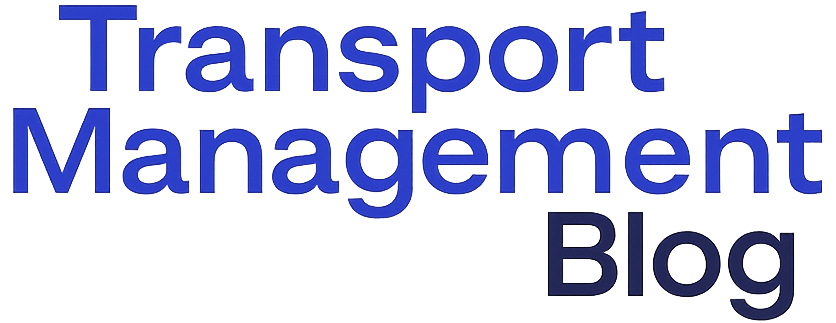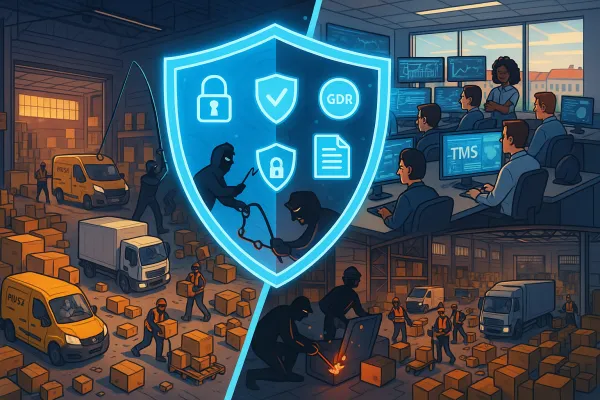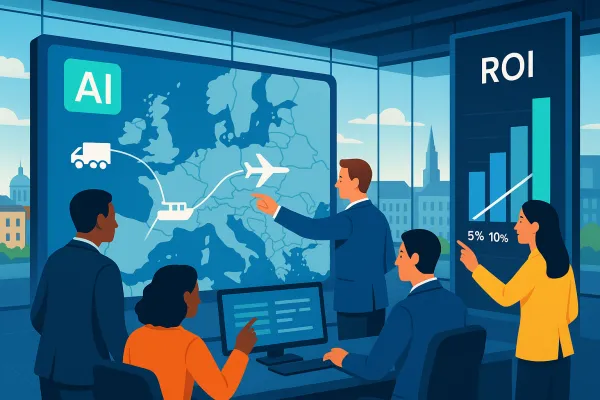The European Shipper's 2026 Transport Procurement Strategy: How to Lock in Rates Before 3% Freight Cost Increases Hit Your Supply Chain

The numbers are already in. No further adjustments are expected in Q4 2025, though major changes are anticipated for 2026. Europe's driver shortage is projected to triple by 2026 if no action is taken, while road freight rates continue to rise and are now outpacing inflation, with toll rates per kilometre close to, and sometimes even higher than, fuel prices per kilometre following the Eurovignette Directive implementation. Add to this the transportation management system market forecasted to reach USD 37.04 billion by 2030, up from USD 18.50 billion in 2025, and you've got the perfect storm for European freight rates in 2026.
Here's what savvy transport procurement specialists are doing right now to prepare for what analysts predict will be a 3% year-on-year increase in contracted prices across European markets. And more importantly, how to combine strategic timing with TMS modernization to lock in rates before your competitors catch on.
The Freight Cost Reality Check: Why 2026 Will Hit Different
The European transport market is setting up for a perfect collision of cost pressures. There is a shortage of around 400,000 drivers across the continent, and this shortage is expected to worsen significantly, with Europe's driver shortage projected to triple by 2026 if no action is taken.
But here's what most supply chain directors are missing: the cost structure itself is fundamentally changing. In Italy, new agreements have led to wage increases of more than EUR 500 per month since the beginning of 2025, following 4% y-o-y labour cost increases across the EU in Q4 2024. It seems plausible that it will include 6.1% in anticipated wage cost development, and changes are also expected in social security contributions for 2026.
The regulatory environment adds another layer. The EU's Mobility Package has introduced new operational requirements including cooling-off periods for cabotage operations and return vehicle requirements mandating trucks return to their member state of establishment every 8 weeks. These aren't just compliance boxes to check - they're capacity constraints that directly impact your transport costs.
Meanwhile, diesel prices are still expected to rise sharply due to the revised European Directive REDIII, which seeks to accelerate the energy transition and meet European climate targets, making the cost of improving sustainability visible in the diesel price.
The Strategic Procurement Window: Timing Your Transport Tenders
Signs of a slight recovery may start to appear towards the end of the year, while early 2026 could bring an increase in volumes and improved freight flows within the EU. This creates a narrow window where spot and contract rates are finding their new equilibrium.
The current market dynamics show something interesting: Q3 confirmed a slow revival in the European road transport market, with contract and spot rates converging, both reaching an index level of 134 points. This convergence is rare and typically signals a market transition point.
Smart procurement teams are using this window to negotiate multi-year contracts with built-in flexibility clauses. The key insight? The market will enter its traditional year-end slowdown, which will limit export dynamics, and in the coming months, and up to 2026, the market will enter its traditional year-end slowdown. This gives you approximately 3-4 months of leverage before capacity tightens again.
Your procurement strategy should focus on securing baseline capacity at current rates while maintaining flexibility for spot market opportunities. The European transport market is functioning in an environment full of disparities: the south of the continent is accelerating and its industry is generating additional volumes, while Europe's largest economy remains in a phase of prolonged stagnation. Use this regional variation to your advantage.
TMS Intelligence: Turning Data Into Negotiation Power
The TMS market isn't just growing - it's fundamentally changing how European shippers operate. Europe transportation management system industry is expected to register a moderate CAGR from 2025 to 2030, with Europe's push for digital transformation across the logistics sector accelerating cloud-based TMS deployment.
Uber Freight launched an AI logistics network comprising 30 autonomous agents, processing USD 1.6 billion in freight for clients including Colgate-Palmolive. But you don't need Uber's resources to leverage TMS data for better negotiations.
Modern TMS platforms now provide predictive rate analytics that can forecast cost trends 6-12 months ahead. Platforms like Oracle TM, Blue Yonder, and Cargoson are integrating market intelligence features that aggregate rate data across multiple carriers and routes. This gives you real negotiating power - you're not just asking for better rates, you're demonstrating market knowledge.
The most advanced users are combining TMS data with external market indices. Environmental mandates are boosting demand for strong carbon accounting and reporting features within TMS solutions, with leading TMS vendors now adding standardized emissions-tracking modules aligned with globally recognized frameworks like the GLEC Framework and ISO 14083. Use this compliance requirement as a negotiation point - carriers investing in cleaner operations often offer better long-term partnerships.
Building Your Transport Portfolio Strategy
Think of your carrier relationships like an investment portfolio. We are heading towards a model of lower frequency but higher efficiency – prioritising profitable corridors and limiting low-load trips, according to transport analysts.
Your base portfolio should include 60-70% contracted capacity with core carriers on your primary lanes. The remaining 30-40% should be split between spot market access and backup carriers. This isn't revolutionary thinking, but the execution is where most companies fail.
Use TMS platforms like Manhattan Active, SAP TM, or Cargoson to track carrier performance metrics beyond just cost and on-time delivery. Track capacity utilization rates, equipment availability, and service recovery times. These metrics become your leverage points when rates start climbing in 2026.
The key is building these relationships now, while carriers still have capacity to offer and are competing for volume commitments. Key provisions include cooling-off periods for cabotage operations and return vehicle requirements mandating trucks return to their member state of establishment every 8 weeks. This regulation means your Eastern European capacity providers face new constraints - factor this into your diversification strategy.
The Total Cost Revolution: Beyond Base Rates
Here's where most procurement teams get their calculations wrong. They optimize for transport rates while ignoring the total cost equation. All importers will be charged the estimated cost increase for road transport from 1 January 2026, which will also include an amount for the truck levy for anyone using domestic freight transport from 1 July 2026.
Your TMS needs to model these additional cost layers. Toll increases aren't uniform across Europe - they vary by country and route. A much bigger unknown remains 2026, which may bring a stronger recovery of European industry, especially in Germany and Italy, but at the same time may burden hauliers with a series of road toll increases in many countries.
Smart shippers are using platforms like Transporeon, E2open, or Cargoson to build total cost visibility into their procurement models. This means factoring in toll variations, fuel surcharge mechanisms, and handling fees that vary by carrier and route.
The most sophisticated approach involves building scenario models within your TMS. Model different fuel price trajectories, toll increases, and wage inflation rates. Then negotiate contracts with appropriate adjustment mechanisms. Don't just lock in flat rates - lock in predictable adjustment formulas.
Your 90-Day Action Plan
Days 1-30: Market Intelligence Phase
Deploy your TMS analytics to establish baseline performance metrics across all carriers and routes. If you're not already using a modern TMS, evaluate cloud-based options like nShift, FreightPOP, or Cargoson that can be implemented quickly.
Focus on extracting three key data points: your actual transport costs per lane (including all fees), carrier performance consistency, and seasonal volume patterns. Use this data to identify your most critical routes where rate increases would have the highest impact.
Days 31-60: Strategic Negotiations
Approach your core carriers with data-backed proposals for extended contracts. The market expects early 2026 could bring an increase in volumes and improved freight flows within the EU, so carriers are motivated to secure volume commitments now.
Structure these negotiations around volume bands with corresponding rate commitments. Build in quarterly adjustment mechanisms tied to specific indices rather than general cost inflation. This protects both parties from extreme market movements.
Days 61-90: Technology Implementation and Risk Mitigation
Implement or upgrade your TMS to include predictive analytics and multi-carrier integration capabilities. Platforms like Descartes, 3Gtms, or Cargoson now offer AI-powered rate forecasting that can alert you to market changes before they impact your operations.
Build contingency plans for capacity shortages. This means establishing relationships with backup carriers and understanding how to quickly shift volume between modes when road capacity constraints hit.
Building Long-Term Transport Resilience
The 2026 rate increases are just the beginning. The market is estimated at USD 1.48 trillion in 2025 and is expected to reach USD 1.74 trillion by 2030, representing a compound annual growth rate (CAGR) of 3.31%, reflecting the fundamental strength of European trade and the continent's position as a global logistics hub.
Your transport strategy needs to account for continuous transformation. The demand for transportation optimization tools is rising due to increasing environmental concerns and the EU's emphasis on reducing carbon emissions in logistics. The adoption of electric vehicles and multimodal transport networks is also driving the need for more dynamic and integrated TMS solutions.
The companies that will thrive are those building adaptability into their transport operations. This means investing in TMS platforms that can integrate with emerging technologies, carrier networks that include both traditional and innovative providers, and procurement processes that can respond quickly to market changes.
Your procurement team needs to think like portfolio managers, not just cost negotiators. The goal isn't just locking in the lowest rates for 2026 - it's building a transport operation that can adapt to whatever changes come next.
Start now. The market window is open, but it won't stay that way for long. No further adjustments are expected in Q4 2025, though major changes are anticipated for 2026. By the time everyone else recognizes the new reality, the best rates and capacity commitments will already be locked up by the shippers who acted first.





